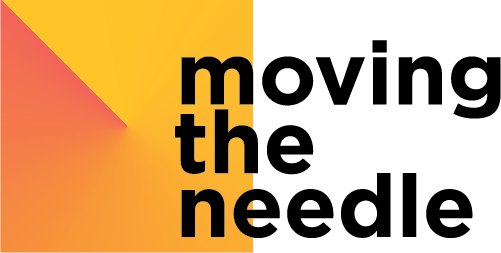Getting the Grade: Tracking OKR & Confidence Levels
Time Travel
Photo by Chris Gilbert
Travel back in time with me for a moment. It’s New Year's Eve and you are watching the fireworks in the sky with your friends. You are holding a glass of champagne in your hand and making some promises to your friends. “This year I’ll quit smoking”, one friend says. Another promises aloud: “I’ll go to the gym more regularly”. You chime in with “I will get out there more, go to networking events”. These are all very nice New Year's resolutions (or goals you might call them any other time of the year), but there is a problem with them.
Let’s use the fitness goal as an example. What will happen in the upcoming months is likely the following: In the first month, your friend will be really committed to going to the gym. She will probably go three times per week. In the second month, she might skip a session here or there. By the time it is March or April, spring is just around the corner and she will give into temptation more and more, joining her friends on the terrace for a glass of wine or two in the sun. She will lose track of her goal and, halfway through the year, she probably won’t show up at the gym anymore at all.
Daily Grind
I frequently see the same problems with businesses. At the beginning of every fiscal year, the management team sets goals. Then at the end of the year, they notice that only a few goals have been met, or worse, none. This also counts for business that do 5 year or 10 year plans as well; without an accountability plan, it will be just more of the same slogging through the workday.
The reason that we can’t seem to ever achieve New Year’s resolutions is because we are too busy getting distracted the whole time. From our mobile phone message alerts, Facebook, Instagram, and even Linkedin to our ever-growing email inboxes. At work, these distractions manifest themselves as typical, standard daily work: meetings, delegating tasks, multitasking, training the new team member, prioritizing which fires to put out first, filing reports and other acceptable “business as usual” tasks.
Don’t get me wrong, the daily tedious work we do is important to do in order to do business, but in order to stay in business, it takes a whole other skill set: Taking the lead rather than constant reacting. This is where OKRs come in. They can guide questions such as: Where do we want to be in X years? How do we get there? What is the plan? What are the Objectives? What are some ways we can identify that we are on track (Key Results)? How often will we check in? What system will we use to measure or keep accountable?
The Enemy
The enemy of taking the lead is called “the whirlwind” or “business as usual”. It pulls at us like a gravitational force. We get distracted by it every time and it prevents us from achieving our goals. It’s totally normal, everybody has a Shiny Object Syndrome (S.O.S) to some extent.
The same is true when companies start with Objective and Key Results (OKRs). With good intentions and motivations, they start to implement them. At the beginning of the year, strategic and tactical goals for the quarter are formulated. For each Objective, perhaps there will be three to four Key Results. Then at the end of the first quarter, management or teams begin to notice that very little or nothing has yet been accomplished. They might continue along this path for another quarter, but most probably will abandon OKRs and switch back to the status quo. I can’t blame them, it is a logical response to the well-meant implementation of a system designed to keep us on track and accountable, but (similar to the gym) without discipline and seeing some motivating results, the desire to continue diminishes amongst the firefighting of “business as usual” and instead is seen as just a waste of time. So, how can we curb these distractions and get back on track?
Getting the Grade
Photo by Ben Mullins
While there are many reasons why OKR implementations fail, a common one is that companies and teams don’t evaluate their OKRs, let alone their OKR process. For this reason, the process of “grading” OKRs is now a quintessential part of growth. Think of it like going back to High School where grades are assigned to our quizzes, tests, essays and group projects (Key Results) and the end of each semester (or in business, per quarter). Some companies grade their KRs mid-quarter. In the end, grading can be seen as a learning tool. There are a number of methods for grading (or scoring) Key Results and the selected methodology of scoring criteria needs to be clearly communicated to the team early on, along with the format of the regular check-ins. The grades you assign indicate how well you have achieved your Key Results. It’s a great way to keep you and your team on track and focused. It also helps to mediate distractions and with prioritizing tasks, too, but it’s not enough. We need a tool to help us learn faster and avoid distractions even more.
Quick Learner
Although there is nothing wrong with the grading technique in general, there is a problem if organizations only use this technique in their OKR toolbox. The problem is that by the time you are at the end of the quarter, you have already been distracted too much by the “whirlwind” and have missed a lot of learning and pivoting opportunities, making it in turn, extra tricky to plan and prepare for the upcoming quarter(s); it’s naive to only learn at the end of each quarter. You want to incorporate a culture of continuous learning to achieve ambitious goals. Going back to the gym scenario, this would look like small, incremental revisions and improvements and making necessary adjustments along the way. Just like slimming down or becoming more toned, it might be hard to notice the small changes, but over time, those small accomplishments add up to big results.
In today’s fast-paced world, it’s all about how to outperform your competitors in the field of speed of learning. This is, of course, in perfect harmony with the mindset behind Agile. To learn faster, you want to apply rapid feedback loops. Within the OKR framework, these can be achieved with weekly OKR check-ins (in combination with quarterly grading). OKR check-ins are the operating system to achieve your goals. Without them, you decrease the likelihood of achieving your OKRs. One of the elements of OKR check-ins is Confidence Scoring.
Confidence is Key
In comparison to grading Key Results, scoring Confidence in achieving them is even easier. You can use a colour coding system such as Andon System (red, amber, green) or any scale to set the level of confidence that you have in a Key Result. At the beginning of each OKR cycle (typically quarterly) all KRs start at amber (50%). Then on a weekly basis, a (executive) team rates the Confidence they have in each Key Result.
Green indicates: we are sure we are going to make it because the current metrics look good. The needle is moving steadily.
Amber signifies: there is a 50/50 chance we are going to make it. The current metrics are behind. The needle is moving slowly.
Red means: we are way off the mark. The needle hasn’t moved an inch. We need to take serious actions or re-visit our tactics.
With that said, sometimes all the Confidence in the world won’t be an automatic success indicator of a Key Result being achieved. Sometimes things happen that couldn’t have been predicted or avoided. Checking in on a weekly basis (as well as quarterly) can be one of the best uses of your time, not only in terms of accountability, but as a way to forecast for the future, especially when something didn’t go as planned or wasn’t accomplished or fell by the wayside. For a team, with each team member weighing in and giving input, lessons can also be gleaned from these measurable experiences and the team can refocus. Why did we think we were on track and where did it go wrong? How can we prepare for something like this again in the future? What were the important considerations that we missed?
Fast Feedback
If you score your level of Confidence in your Key Results on a weekly basis, you can be certain that you will get a lot more feedback from the system (executive colleagues, business partners and team members) regarding small adjustments, pivoting and learning than you would have with only grading OKRs at the end of the quarter. Weekly scoring of your Confidence on your KRs helps you and your team make better and quicker decisions. It will reflect a plan with milestones and regular check-ins that will not only instill confidence in the progress of KRs, but also put meaning to the “business as usual” work of your team.
Summary
Weekly and Quarterly check-ins will keep Key Results on track
Select the best method of grading Key Results that suit your team
Regular Confidence Scoring can help you pivot in the short-term and forecast for the long-term
Haven’t You Heard?
Check out my talk at the IT Spring Conference to learn more about OKR check-ins and subscribe to my free OKR email course to keep yourself regularly updated, inspired and on track.


